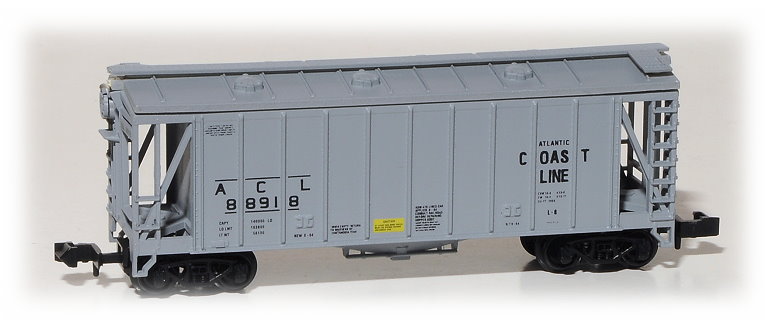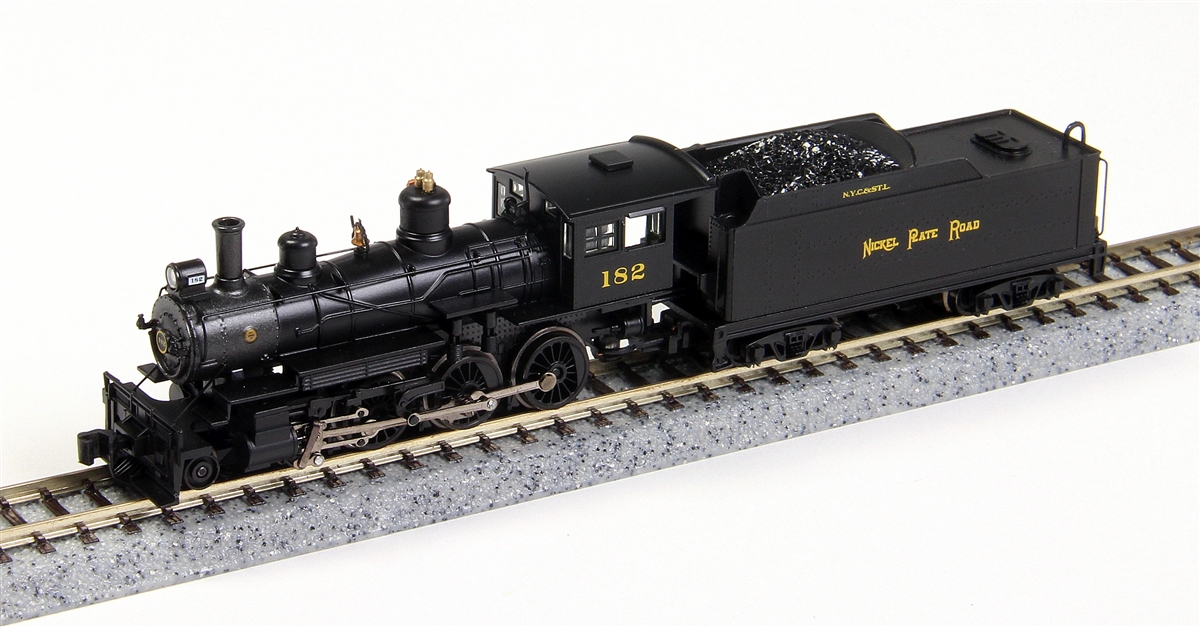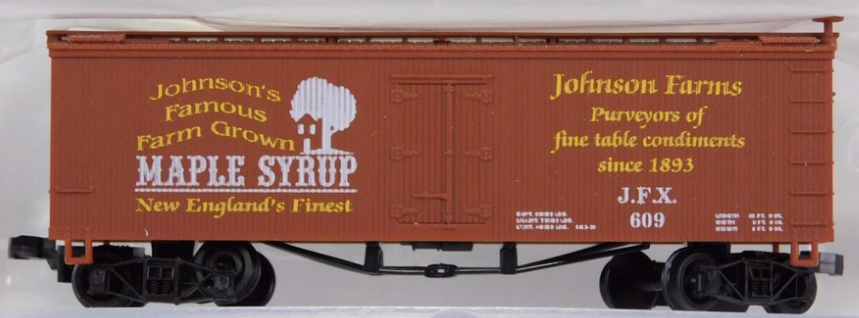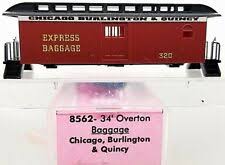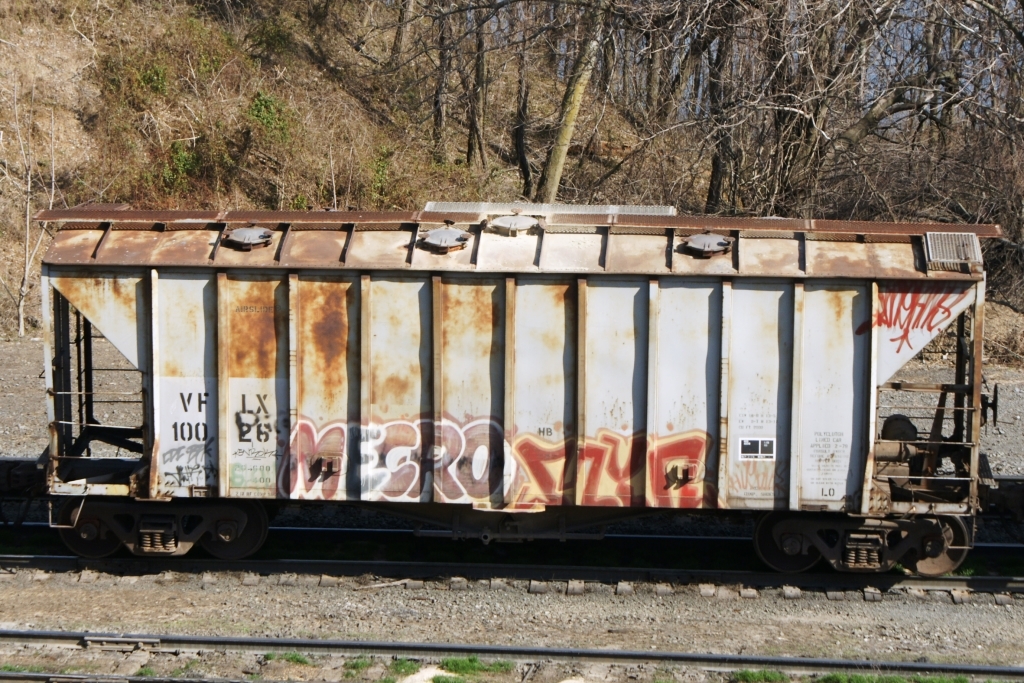Model Information: This body style first appears in the 1992 Atlas catalogs, marked as "Coming in early '92". The first release was produced in six road names plus and undecorated car. The early production was performed in Atlas' New Jersey facility, but when Atlas moved all their toolings to China in the late 1990s, this mold was moved.
Prototype History: The airslide covered hopper was introduced by General American Transportation Corporation (GATX) in 1953. Approx. 5000 of the 2600 cu. ft. cars were built between that year and 1969. The airslide is primarily designed for the bulk shipment of dry, granular or powdered commodities. The design of that car is such that it can be loaded and unloaded quickly and with little spillage through the use of air pressure. The most common commodities carried include: flour, sugar, starch, plastic pellets, cement, powdered chemicals and carbon black.
he Airslide was first patented in 1953, the same year Pullman Standard introduced their PS-2. What made the car unique was a set of fabric membranes in the hopper bays. Made of tightly woven cotton and treated with silicone, the Airslide® membranes were moisture-proof but allowed air to pass through. Compressed air was supplied at the unloading site and passed through the membrane up into the load. This aerated the load, allowing it to flow easily through the hoppers.
he Airslide was first patented in 1953, the same year Pullman Standard introduced their PS-2. What made the car unique was a set of fabric membranes in the hopper bays. Made of tightly woven cotton and treated with silicone, the Airslide® membranes were moisture-proof but allowed air to pass through. Compressed air was supplied at the unloading site and passed through the membrane up into the load. This aerated the load, allowing it to flow easily through the hoppers.
Road Name History: ACL’s roots go back to the Petersburg Railroad in 1830. By the 1870s, their successors and some affiliated lines began using Atlantic Coast Line as a nickname and through a number of consolidations Atlantic Coast Line became the official name by 1900.
Atlantic Coast Line funneled traffic from northern Virginia (and its connections to the northeastern trunk lines via the RF&P) down through the Carolinas, Georgia and into Florida as far as Naples on the Gulf Coast. Acquisitions after the war added routes from Columbia and Spartanburg, South Carolina to the coast and lines linking Atlanta, Birmingham and Montgomery to southern Georgia and Florida.
At that point, the Atlantic Coast Line boasted 5,743 miles of railroad, 629 locomotives, 361 passenger cars, and 31,284 freight cars. To put that into perspective for you western guys, that's four times the size of Western Pacific.
ACL was the premier route for New York to Florida passenger traffic. The ACL's "Champion" left New York on the Pennsy, was handed off to the RF&P from Washington to Richmond, ran on the ACL to Jacksonville, FL and was then handed off to Florida East Coast for the ride to Miami. The "West Coast Champion" skipped the FEC as ACL went all the way to Tampa on Florida's Gulf Coast on its own rails. ACL also forwarded some Chicago to Florida trains via connections. Much of the system was relatively flat, allowing ACL to use 4-6-2’s in fast freight service (one of the few railroads to do this.)
ACL is best known for its purple and silver diesels. This scheme was used on freight, passenger, and switcher power until 1957. By that time, it became clear that these colors were difficult to maintain, so the ACL switched to racing stallion black with yellow “tack.” The Atlantic Coast Line merged with the Seaboard Air Line Railroad in 1967 to form the Seaboard Coast Line.
At that point, the Atlantic Coast Line boasted 5,743 miles of railroad, 629 locomotives, 361 passenger cars, and 31,284 freight cars. To put that into perspective for you western guys, that's four times the size of Western Pacific.
ACL was the premier route for New York to Florida passenger traffic. The ACL's "Champion" left New York on the Pennsy, was handed off to the RF&P from Washington to Richmond, ran on the ACL to Jacksonville, FL and was then handed off to Florida East Coast for the ride to Miami. The "West Coast Champion" skipped the FEC as ACL went all the way to Tampa on Florida's Gulf Coast on its own rails. ACL also forwarded some Chicago to Florida trains via connections. Much of the system was relatively flat, allowing ACL to use 4-6-2’s in fast freight service (one of the few railroads to do this.)
ACL is best known for its purple and silver diesels. This scheme was used on freight, passenger, and switcher power until 1957. By that time, it became clear that these colors were difficult to maintain, so the ACL switched to racing stallion black with yellow “tack.” The Atlantic Coast Line merged with the Seaboard Air Line Railroad in 1967 to form the Seaboard Coast Line.
Brand/Importer Information: Eastern Seaboard Models was founded in 1987. They are a manufacturer of N scale reproductions of North American eastern railroad prototypes. The have both decorated other manufacturers' models as well as designed body styles of their own. They are located at PO Box 301, Waldwick, New Jersey 07463-0301 U.S.A.
Their 2016 lineup includes ready-to-run gondolas, well cars, hoppers, tank cars and boxcars. They also produce craftsman quality kits in their "Made in America" series. ESM products may be purchased directly from their website.
Their 2016 lineup includes ready-to-run gondolas, well cars, hoppers, tank cars and boxcars. They also produce craftsman quality kits in their "Made in America" series. ESM products may be purchased directly from their website.
Item created by: gdm on 2017-11-20 09:40:40. Last edited by gdm on 2023-11-26 09:48:49
If you see errors or missing data in this entry, please feel free to log in and edit it. Anyone with a Gmail account can log in instantly.
If you see errors or missing data in this entry, please feel free to log in and edit it. Anyone with a Gmail account can log in instantly.


